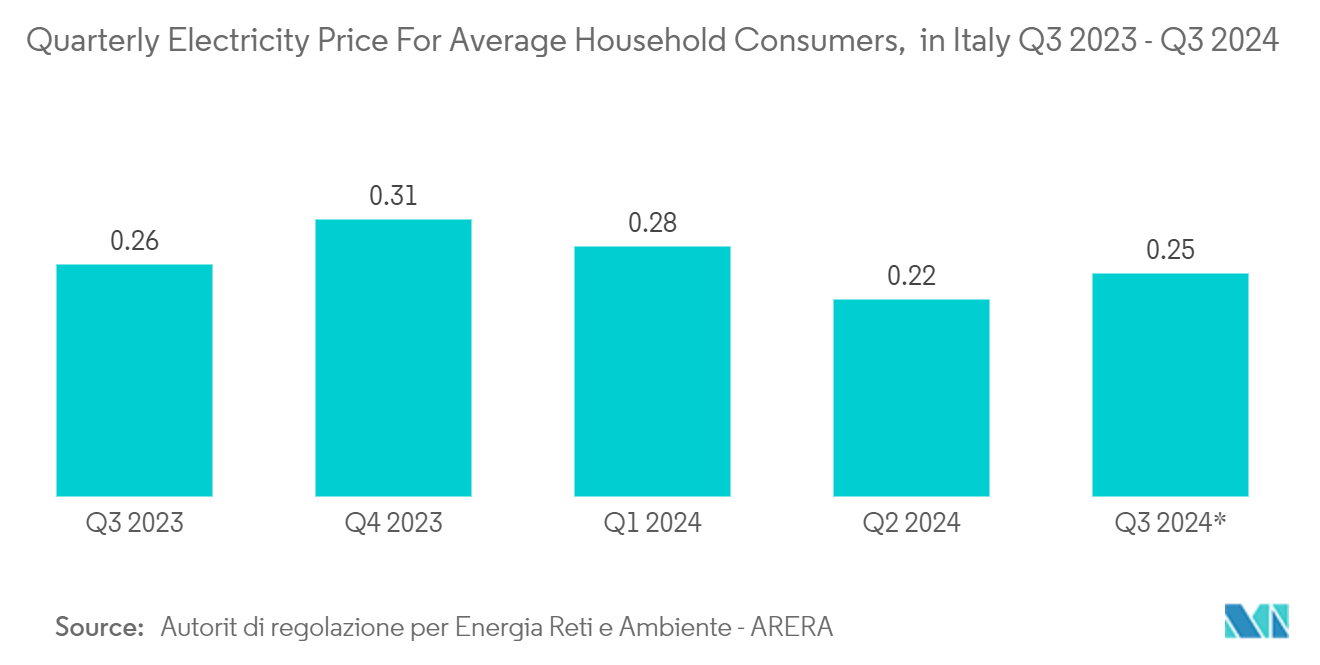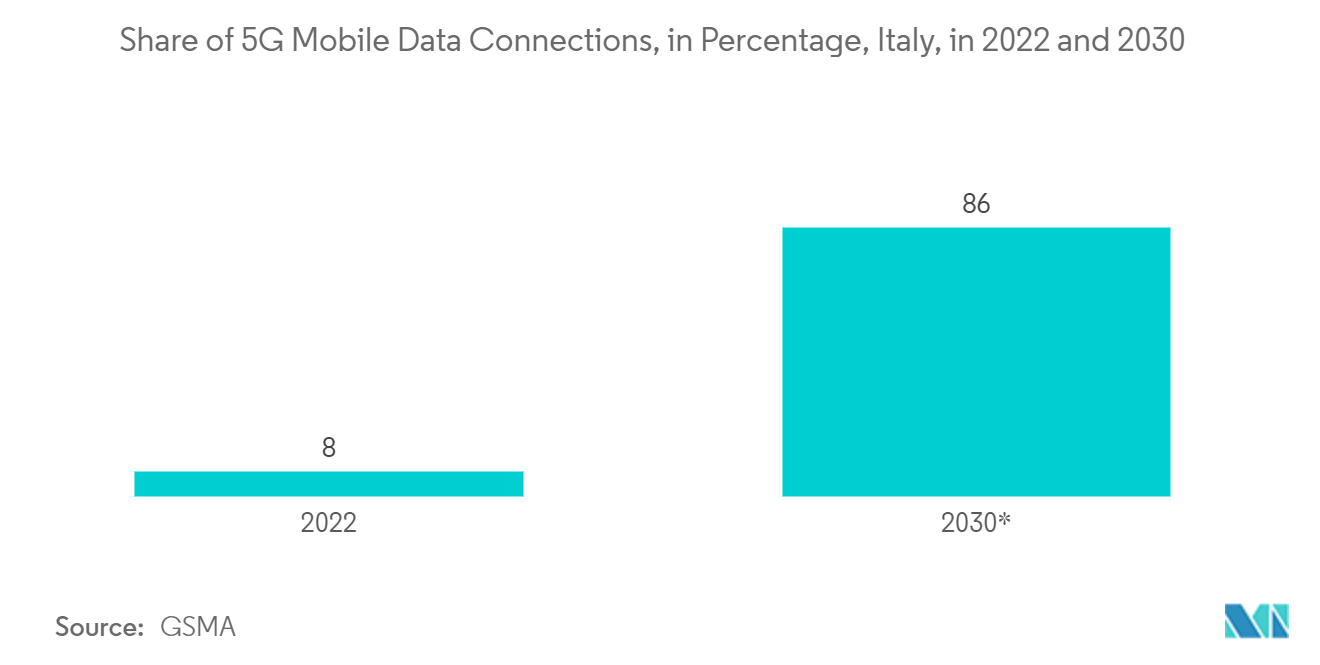Market Trends of Italy Smart Home Industry
Energy Management Product Segment is Expected to Hold Significant Market Share
- With rising energy costs and demand in the country, organizations increasingly seek efficient methods to monitor, control, and save energy. According to ARERA, in the last quarter of 2023, the average electricity price for households in Italy was recorded at EUR 28.29 cents per kWh, a rise from the prior two quarters in the same year. Implementing a smart energy management system (EMS) helps reduce costs and meets energy demands. It leverages emerging technologies like the Internet of Things (IoT) and big data as opportunities to enhance energy consumption management, especially in residential settings.
- Further, the rising focus on sustainability and eco-conscious practices is driving the need for energy-efficient solutions. Currently, consumers are acutely aware of their carbon footprint, which is driving a surge in demand for smart home energy management devices. These devices empower users to monitor and regulate their energy consumption efficiently. This trend mirrors initiatives against climate change, pushing for the embrace of cleaner, more sustainable technologies. Consequently, market players are increasingly innovating and crafting products emphasizing energy conservation and environmental responsibility.
- Moreover, major players in the market are focused on innovating new products that adhere to the market. For instance, in February 2024, Enphase Energy Inc. commenced production shipments of Italy's latest home battery offering, the IQ Battery 5P. This battery, boasting a 5 kWh capacity, features a modular design. Through the Enphase App, users can monitor their system's performance and leverage its self-consumption feature, aiding in reducing grid electricity dependency.
- Several government initiatives regarding energy efficiency are also expected to bolster the adoption of smart home energy management systems in residential households. For example, the Italian government is offering several incentives to renovate old properties that improve energy efficiency.

Convergence of Emerging Technologies, Such as AI, IoT, and 5G connectivity to Drive the Growth
- The ongoing advancements in Internet of Things (IoT) devices, artificial intelligence (AI), 5G connectivity, and cloud-based platforms are poised to revolutionize smart homes in the country. This transformation will bring about seamless automation and customized experiences, enhancing residents' daily lives and bridging the gap between technology and living.
- In addition, the country is focused on strengthening its 5G connection nationwide. According to GSMA, by 2023, Italy was expected to account for 86% of 5G mobile data connection share across the region. Adhering to this, the Italian government has unveiled two key initiatives to roll out 5G technology: the Italia 1 Giga Plan and the Italia 5G Plan, which held an estimated value of EUR 949 million (~USD 1,026.6 million). This technology facilitates the seamless integration of smart devices, from thermostats and security systems to surveillance cameras and connected appliances.
- Further, integrating artificial intelligence (AI) and machine learning has ushered smart homes into a new era of functionality and adaptability. Voice-activated home assistants powered by AI have swiftly become commonplace in households. AI's influence has made smart homes responsive and adaptive, with the ability to learn from user behavior, ultimately elevating the user experience.
- Moreover, the Internet of Things (IoT) spearheads this evolution, enhancing home automation by fostering seamless connectivity. Through the IoT, smart devices can communicate and collaborate via Internet networks. This interconnectivity allows devices to share data and react intelligently to various triggers. For example, in a smart home with IoT devices, settings can autonomously adapt to user preferences, time, weather, and occupancy, delivering a tailored and dynamic living environment.


